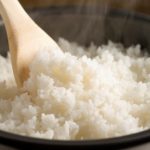How to handle a water-damaged phone depends on the extent of the damage and the amount of time the phone was exposed to water. Below are some ways you can try to save your phone.
What happens when a phone gets wet?
Some initial signs of a water-damaged phone include:
- Malfunctioning touch screen, random screen taps, or unresponsive display.
- Distorted sound due to water damage, unable to make or receive calls.
- Black spots or fading on the screen, unresponsive touch.
- Camera failure.
- No SIM card detected, Wi-Fi connection issues.
- Phone won’t turn on, no signs of activity.
/fptshop.com.vn/uploads/images/tin-tuc/164845/Originals/b17-1rs.jpg)
Immediate steps to take when a phone gets wet
When a phone gets wet, the longer it stays wet, the more likely it will damage the phone’s functionality. Here are some steps you can take to salvage your phone if you encounter such a situation:
Remove the phone from water immediately
The first step is to remove the phone from water as quickly as possible. Hold the phone vertically to allow water to drain out through the charging port, headphone jack, and other openings, preventing water from pooling inside.
Power off the phone
Water can seep deep into the phone and cause short circuits and motherboard damage if the device remains powered on. Therefore, you should turn off the phone immediately after taking it out of the water.
Remove the SIM card and memory card
Open the back cover of the phone and remove the SIM card and memory card. Use a soft cloth to gently wipe the inside of the phone and let it dry in a cool, well-ventilated place. This helps prevent damage to important components and facilitates faster drying.
Note: For some phones with non-removable back covers, turn off the phone and then remove the SIM card.
Dry the exterior of the phone
- For a normally wet phone: Use a soft cloth to thoroughly dry both the interior and exterior of the phone. For charging ports, SIM slots, speakers, use a small cotton swab to clean the crevices. Avoid shaking the phone to prevent water from seeping deeper inside.
- For phones soaked in other liquids (saltwater, sugary drinks, etc.): These liquids can corrode, so use a damp cloth to clean the phone first. Then, use a dry cloth to wipe it again.
/fptshop.com.vn/uploads/images/tin-tuc/164845/Originals/b17-1rss.jpg)
Dry the interior of the water-damaged phone
Method 1: Place the phone in a rice container or silica gel
You can place the phone in a container with rice, which has the ability to absorb moisture and help dry the phone. Leave the phone in the rice container for at least 24 – 48 hours.
You can also use moisture-absorbing packets or silica gel to dry the phone.
/fptshop.com.vn/uploads/images/tin-tuc/164845/Originals/b17-4rs.jpg)
Method 2: Use a vacuum cleaner
If the phone is still damp after an extended period, you can use a vacuum cleaner on a low setting and at a safe distance to blow dry the device. Be cautious and use a vacuum specifically designed for phones. Do not use a regular vacuum cleaner as high temperatures can cause damage.
Method 3: Place the phone on a dry cloth in a well-ventilated area
You can place your water-damaged phone on a soft cloth and position it near a window or in a well-lit area for faster drying. However, avoid direct sunlight as it can cause overheating and further damage.
Wait for the phone to dry completely
After following all the above steps, be patient and wait until the phone is completely dry before using it again.
Power on and test
After 1-2 days of drying, turn on the phone and check if all functions and components such as the microphone, speaker, and charging port are working properly.
If the phone fails to turn on, it may have suffered irreversible damage. At this point, you need to take your phone to a reputable repair center for assistance.
What not to do when a
phone gets wet
Using a hairdryer to dry the phone
Avoid using a hairdryer with high heat to blow-dry the phone. Excessive heat can damage sensitive components inside the phone.
If the phone is excessively wet, using a hairdryer can push water deeper into the device, causing further damage.
/fptshop.com.vn/uploads/images/tin-tuc/164845/Originals/b17-2rs.jpg)
Putting the phone in the freezer
Some people believe that putting a water-damaged phone in the freezer reduces conductivity, and the freezing water will not burn the motherboard. However, placing the device in the freezer can damage the screen, and thawing the phone afterward can worsen the condition.
Blowing air or using a fan to dry the phone
You may think blowing air or using a fan to dry the phone is a good solution, but in reality, the airflow can push water deeper into the device.
Shaking the phone
Do not vibrate or shake the phone after it comes into contact with water. This will not help remove the water and may instead cause water to seep deeper into the device, causing serious damage to the components.
Carelessly cleaning the charging port
Do not insert the cotton swab too deep into the charging port as cotton fibers may get stuck inside the phone. Overzealous cleaning can sometimes damage the electrical circuitry inside the phone.
/fptshop.com.vn/uploads/images/tin-tuc/164845/Originals/b15-5rs.jpg)
Plugging the phone into the charger when
the phone gets wet
Charging a wet phone can potentially cause a battery explosion due to short-circuiting.
/fptshop.com.vn/uploads/images/tin-tuc/164845/Originals/b17-3rs.jpg)
Continuously pressing the screen
Avoid pressing any buttons on the phone’s screen when it is still wet, as it may further damage the device.
Conclusion
These are just some guidelines for emergency situations where a phone gets wet unexpectedly. If you are not confident or have no experience, it is advisable to take your phone to an authorized service center or repair shop for advice and assessment.
More Articles:
- Quick fixes for a water-damaged phone’s speakers
- How to recover your TikTok account in a flash
To meet consumer demands, FPT Shop offers a wide range of smartphones from reputable brands, providing high-quality products at competitive prices.
How to Easily Get Rid of Adhesive Stains on Plastic Items
Are you having trouble getting rid of those pesky adhesive marks left behind by plastic? Have you been searching for an easy and efficient way to do so? Well, your search may be over! In this article, we will provide you with three simple and highly effective solutions for removing plastic from adhesive marks.
DIY Guide to Saving a Water-Damaged Cell Phone
If your phone has become water-damaged don’t despair! We have easy tips and tricks to help you get your phone up and running again without having to take it into a repair shop. Learn how to fix your phone from the comfort of your own home.






































